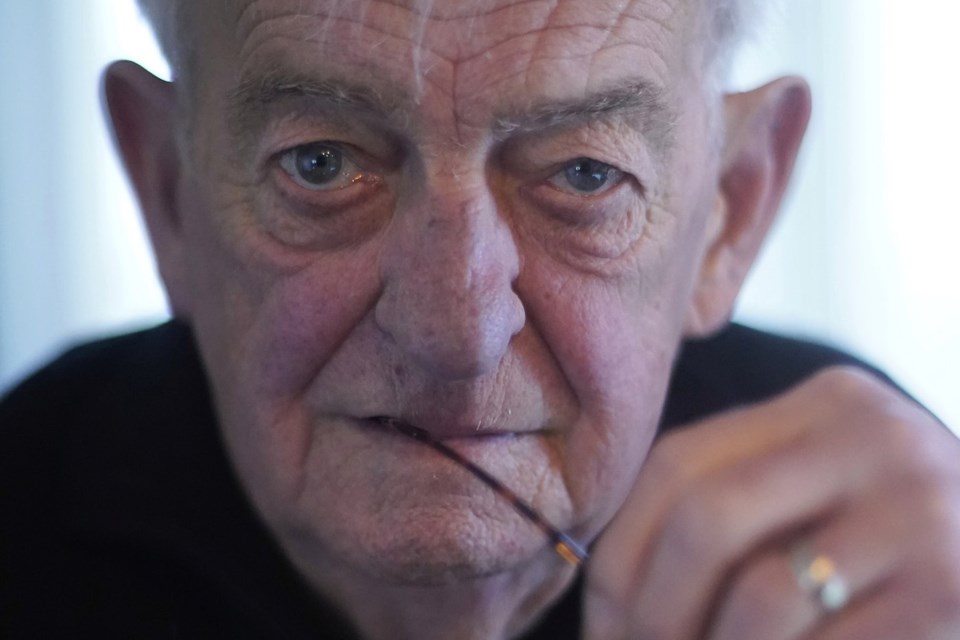SPRINGFIELD, Ill. (AP) — Robert A. Daugherty, whose four-decade career with The Associated Press captured history including President Lyndon B. Johnson writing the speech in which he declined reelection, Richard Nixon flashing “V for Victory” signs before leaving the White House in disgrace and Jimmy Carter clasping hands with Middle East leaders after cementing a peace treaty, has died after a lengthy illness. He was 86.
Daugherty, the son of sharecroppers who shined shoes for spare change in his youth, died Monday in Noblesville, Indiana, his wife Stephanie said.
He was born Jan. 16, 1939 in a three-room wooden house in rural Kentucky.
In a 43-year career, he covered nine presidents, 22 political conventions, the Watergate hearings, the Paris Peace Talks over the Vietnam War, the Gulf War and presidential trips overseas. He also covered dozens of high-stakes sporting events including the Olympic Games, Masters Tournaments, and Kentucky Derby races.
J. David Ake, who retired as AP's director of photography, said Daugherty — who went by Bob — also became a “tack-sharp leader” focused on helping AP photojournalists do their best work.
“His goal was to make everyone who worked with him or for him better,” Ake said. “Because he understood what it took to make a good frame and get it on the wire, no matter what, he was always there to lend a hand, make a suggestion, or just run interference. And it didn’t hurt; he was the kindest man you will ever meet.”
Daugherty learned the power of photography early as he distributed a community newspaper to local farmers. He later recalled one of the recipients telling him, “You know I can’t read, but I sure like the pictures.”
After the family moved to Marion, Indiana, Daugherty shot pictures for his high school yearbook, which led to a job with the local Marion Chronicle-Tribune. He next worked at the Indianapolis Star, where he met Stephanie Hoppes, a staff writer. They were married on Dec. 7, 1963.
With no money to pay for college, Daugherty later said, "I earned my junior college degree at the Marion Chronicle, bachelor’s degree at the Star and master’s with The Associated Press.”
Although the couple traveled extensively in retirement, Stephanie Daugherty said she never accompanied her husband on his overseas work trips, such as Nixon's groundbreaking visit to China in 1972.
“He was very dedicated to doing his best and he didn't want me as a distraction,” she said.
Persistence, timing and speed were keys to Daugherty's success in Washington with the AP. Hearing that Johnson was writing a speech on a Saturday in the spring of 1968, Daugherty badgered a press aide until he was let in to shoot a haggard, open-collared LBJ writing the speech declining his party's nomination.
Daugherty positioned himself for a straight-on view of Nixon flashing “V for victory” hand signs at the door to a helicopter on the White House lawn, minutes after becoming the first president to resign in 1974.
When Carter grasped the handshake of Israel's Menachem Begin and Egypt's Anwar Sadat after the signing of a 1979 peace treaty between the two countries, Daugherty captured the moment in nearly identical color and black-and-white images. At the time, this required him to use two separate cameras.
When Carter visited Kentucky in July 1979, other photographers ditched what was expected to be a routine motorcade to an event at a school. But Daugherty stayed, catching the normally staid Carter seated on top of the presidential limousine to greet well-wishers. He later said that photo was a favorite among all the images he made of U.S. presidents.
“You must stay alert when you’re with the president,” Daugherty said. “You must be prepared.”
“Bob was a legend,” said Pablo Martínez Monsiváis, assistant photo chief for AP’s Washington bureau. Asked about an iconic photograph, Daugherty would describe all the planning that went into the shot or simply say, “I got lucky.”
“If anyone was lucky, it was me who got to work with him,” Monsiváis recalled.
Among other awards, Daugherty won the Oliver S. Gramling Award, AP's highest journalism honor, in 1999. In 2009, the White House News Photographers Association presented him with a Lifetime Achievement Award and in 2015 he was inducted into the Indiana Journalism Hall of Fame by the Indiana Chapter of the Society of Professional Journalists.
He was also a soccer coach and swim-meet official for his son John, said his wife, and in retirement never missed a chance to watch the sun set over the Morse Reservoir, where the couple lived.
John O'connor, The Associated Press



